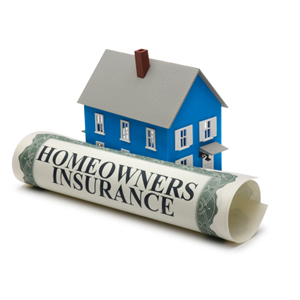What is Homeowners Insurance?

Everyone knows that if you own or even rent a home you need to protect it with insurance, but not everyone is aware of just what a homeowners policy covers and the various components that make up the typical policy. We thought it might be a good idea to review exactly what a homeowners policy covers.
Homeowners insurance is a classified as a multiperil policy. This simply means that is combines both property and casualty coverage under the same policy. This makes it convenient and less expensive to insure your home against a wide variety of risks such as fire, theft, or windstorm damage. In addition to protecting your home and belongings, homeowners insurance also offers liability coverage against accidents that may injury other people on your property.
There are some limitations with homeowners insurance. Typical policies do not cover losses from floods, earthquakes, mudslides, mudflows or landslides. If you live in an area where this could be an issue you should purchase separate coverage against these types of risk.
Homeowners policies are broken into two sections. Section I (A, B, C and D) deals with the property coverages and section II (E and F) deal with liability protections. Here is a quick rundown of what each section covers.
Coverage A - Dwelling Coverage
This part of the policy provides coverage for all major property such as the house and any attached structures. It protects all the fixtures in the house as well as all major systems, including heating, plumbing, electrical wiring and any installed air conditioning systems.
The amount of this coverage is usually determined by the market value of the house. You should be carrying a minimum of 80 percent of the replacement value of the house or dwelling.
Coverage B - Other Structures
This insurance protects any other structures on your property that are not the main house. This includes items such as a detached garage, a tool shed or other storage structures. On a typical policy, coverage is limited to 10 percent of the Coverage A limit. If your additional structures are worth more than that you should consider carrying additional protection for those structures. Again, you should have insurance equal to 80 percent of the replacement value of the structures.
Coverage C - Personal Property
This coverage is for the protection of all the personal contents of your house that is owned by you or other family members that live in the house. On a normal policy, the value of this protection is 50 percent of Coverage A. If this amount falls short of the value of your belongings, it is possible to purchase additional coverage.
It should be noted that coverage is limited on certain types of personal property that are more likely to be lost or stolen. This includes but is not limited to cash, furs, jewelry, securities, as well as coin or stamp collections. If you have valuables of this sort you may need to buy an additional policy that has a stated value for these items.
Coverage D - Loss of Use
This will help pay for any additional living expenses if your home is damaged by an insured peril, such as a fire and you cannot live in your home. Covered expenses include but are not limited to meals, housing expenses and even storage for your belongings while the house is fixed or rebuilt.
This protection only pays for additional expenses above and beyond your normal living costs and is limited to 20 percent of coverage A. You will have to turn in all receipts for consideration. If approved you will be reimbursed. There are exclusions so check your policy for details.
Coverage E - Personal Liability
The liability section of your policy provides coverage if you or a resident of your home is legally responsible for the injury of another person. It will pay for a trial defense if necessary as well as any damages that are deemed covered by the policy. All policies have exceptions so be sure you have a full understanding of your coverage. In almost all situations, an intentional act will not be covered.
Coverage F - Medical Payments to Others
This part of your coverage will pay for any reasonable medical expenses for people that are accidentally injured on your property. This could be a person slipping on your walkway, a neighborhood child injured in your house or a dog bite. This coverage may also provide protection if you manage to injure a person away from your home. Coverage varies in these circumstances.
This protection does not cover people who live in your house and in no way is it a substitute for health insurance. There are exclusions, a common one is business activities so if you run a business out of your home you will need to consider additional coverage.
